Cheryl R. Cowtan's Blog, page 4
December 16, 2016
Writing the Inner Conflict of a Main Character
“I was tempted to deny I was capable of gutting and skinning him, but I had killed before.”
Who would say such a thing? Well, the tortured main character of my first-in-series novel, “Girl Desecrated”, of course. And if I wrote Rachel’s inner conflict correctly, the reader should be wondering if she’s going to gut Donald, the American or not.
[image error]Rachel is consumed by a constant battle of wills against her alternate personality, who unfortunately, likes to hunt people. The good news, Rachel mostly keeps the “other” down. But sometimes, the She erupts, and then all hell breaks loose.
This battle is “inner” conflict due to the nature of the “internal” force that is part of Rachel. Inner conflict can come in many different forms, mental illness, low self-esteem, guilt, compulsion etc. Generally the root of the conflict leads to choices between good and evil.
Inner conflict creates tension as readers wait to see if the character can overcome the part of them that is causing problems. It generally presents less action than external conflict, unless of course, the inner conflict is someone like Scarlett – Rachel’s “other”.
Scarlett does bad things when she gets out, and this is where the action comes in. When Scarlett is “out”, the conflict becomes external, because Scarlett has effectively become the antagonist and Rachel must battle her to get her body back.
But wait… if Scarlett is an alternate personality, isn’t that inner conflict? Wow… did I just outsmart myself? Or can a novel have two types of conflict for the protagonist?
I think so. Consider “Lord of the Rings” and Frodo. The ring is external. The weakness of “man” and Gollum in falling for the seduction of the one ring is probably character flaw. But the battle Frodo goes through in resisting the temptations of the ring is internal.
Internal conflict can be created by opposing morals within one character.
In contrast to the dark grain of the coffin, her skin shone alabaster white, unflawed and as smooth as marble. And her mouth… My fingers twitched to trace those lips that were still full and dark like wine. Closing my eyes, the memory of the feel of those lips on mine caused a heady rush. My loins warmed beneath my funeral pants, jolting me to an awareness of my surroundings with a horrific sense of shame.
Gritting my teeth, I contemplated the magnolia’s grey trunk to defuse my passion. Dark with rivulets of rain, the trunk was as much a betrayer as her lips. For it too took me back to the recent past. It had been a silent witness to my hands gripping its bark above Scarlett’s hair as I had turned her mouth into a little circle of surprise with my heated thrusts.
Fantasizing about the dead woman at a funeral? That’s just nasty. And definitely something a God-fearing man should be ashamed of. Notice how the character swings between his desires and his horror at the inappropriateness of those desires. This back and forth creates tension as we read, because we’re watching a struggle and we don’t know which way he’s going to go.
Another example of internal conflict is when the main character knows they should do one thing, but they want to do another.
It only took me ‘til six to burn through the last of my birthday budget. I cast a look around the pub. It was the first time I noticed the people sharing my space since I’d arrived. A few men were perched on time-scarred, wooden stools along the bar, regulars by the look of their defeated posture. Experience had taught me men are cheap and easy, so it wouldn’t take much to get a free beer. Normally.
Problem was, I had made a birthday resolution to not have sex or engage in any physical interactions or altercations with members of the male gender for one week. Sounds a little uptight, but those are the exact words Patrick used before pressuring me to agree.
Patrick tricked me into agreeing, really. He knows how much I want to get better and go to college. He felt it would be a helpful part of my therapy to swear off men for a week. He seemed to think drying out the well so to speak, would almost cure me. That seemed a little farfetched, considering my psychiatrist thought I was certifiably crazy, but hope is a valiant chum.
I needed all the help I could get, even if it was from my mother’s male nurse at the Homeward Sanitarium.
This example keeps the readers’ attention because they want to know if the character will stick to their promise.
Internal conflict can be created in a character through any number of stressful inner battles, from moral and religious standards, to poor leadership or relationship skills, to guilt, low-self worth, poor communication skills, mental health issues and personality traits.
The internal conflict works for your novel when the reader is encouraged to follow the conflict through to see how the character will resolve it, or be beaten by it. That’s your goal, so play it tight to the character and make it seem as if the character themselves don’t know what’s going to happen either.
__
The above excerpts are from “Girl Desecrated” the first novel in “The Fergus She” series, which is available here. Click through to read more free chapters and see how Rachel fares in her battle against herself–the Scarlett.


December 11, 2016
Goodreads Giveaway Results!
I can't tell you how excited I was to see over 1400 Goodreads' members sign up to win an autographed copy of "Girl Desecrated".
I'm so pumped! I'm working with my printer to print off a run of novels with images, so that I can send something special to my five winners! Along with a tree of life bracelet of course. If the print run works out, I might keep the images in the novel for future readers. We'll see.
Thanks so much to all of you who tried to win a copy of my novel. I was really pleased to see such participation. Over 600 of you put "Girl Desecrated" in your "to read" shelves, so I'm hoping to see more reviews coming in.
Currently, the reviews are all 4 stars, which is great. But what is truly special is the unique perspectives of each reader. I'm always intrigued by what each reader takes from the novel.
I'm looking forward to running another giveaway soon!
November 9, 2016
Machine Learning Tests Amazon Novels and Shows Book Covers Reflect Genre
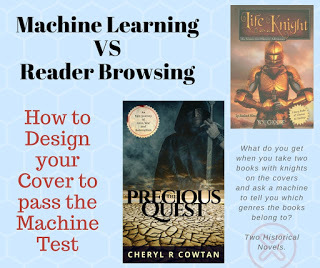 We already know readers judge books by their covers. If you are still fighting this social truth, then close your eyes, take a deep breath and release your rebellion to the universe. Repeat after me, "Readers judge books by their covers".
We already know readers judge books by their covers. If you are still fighting this social truth, then close your eyes, take a deep breath and release your rebellion to the universe. Repeat after me, "Readers judge books by their covers".If the above is true (and it is), can we say books in specific categories or genre
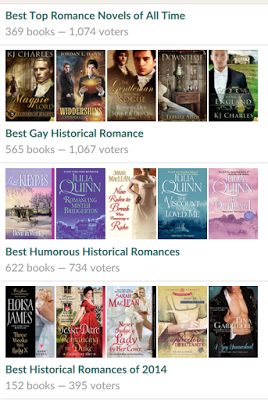 s have similar and distinct styles, fonts and images used in book cover design?
s have similar and distinct styles, fonts and images used in book cover design? A quick scan of Goodreads can provide a visual for us to examine, but we could never go through as many books in as short a time, or with as much brain power as a computer could.
Brian Kenji Iwana and Seiichi Uchida conducted a study at the Kyushu University in Japan to determine if book genre could be guessed by cover design. What's interesting is they used a "Convolutional Neural Network (CNN) to predict the genre of a book based on the visual clues".
In case you care...
Convolutional Neural Networks (CNN), in particular, are multilayer neural networks that apply learned convolutional kernels, or filters, to transform input data as a method of feature extraction. The general idea is to use learned features rather than predesigned features as the feature representation for image recognition. Recent deep CNNs combine multiple convolutional layers along with fully-connected layers. By increasing the depth of the network, higher level features can be learned and discriminative parts of the images are exaggerated. These deep CNNs have had successes in many fields including digit-recognition, and large-scale image recognition (Judging...).
For the rest of us, I'll use the acronym CNN or "a computer" to avoid brain cramp.
Using "machine learning", Uchida and Iwana had their CNN analyze and genre-sort 137,788 book covers from Amazon.com. "Title, author and sub-categories were discarded" (Judging...).
Machine learning is a term used to describe a computer's ability to "learn" based on what it is taught. It isn't quite doing what it's told and it isn't quite true artificial intelligence. The computer is given some rules, which we call algorithms. Then, the computer runs these rules against the testing material or idea and can start to make predictions based on data patterns.
In this book cover study to determine if genre is recognizable in book cover design, the Japanese researchers trained their system on visual design using approx. 110,000 Amazon.com novels. After the system was trained, it tested it's genre learning against just under 14,000 novels to ensure pattern logic was working, then it ran the last 10% of the books in an effort to categorize the covers.
In some genres, such as cookbooks, technology and travel, the computer could recognize about 40% of the book categories.
Using a CNN model, we categorized book covers into genres and the results of the experiment had an accuracy of 21.9% for Top 1, 32.1% for Top 2, and 40.2% for Top 3 in 20-class classification (Judging...).
Other genres were more ambiguous and confusing and the system did not fair as well.
Another example of misleading cover images can be seen in the “Biographies & Memoirs” category. The difficulty of this category comes from a high rate of sharing qualities with other categories causing substantial ambiguity of the genre itself. A high number of misclassifications from the “Biographies & Memoirs” category went into “History". (Judging...)The bottom line is this research showed a consistency between visual images within book genres.
In this paper, we presented the application of machine learning to predict the genre of a book based on its cover image. We showed that it is possible to draw a relationship between book cover images and genre using automatic recognition (Judging...).So, what does this mean for authors? My personal conclusion is that readers, machines and designers will follow trending visual design for genre categories. If we, as authors, design our novel covers outside of those trends, we run the risk of our novels being purchased by the wrong readers, which can lead to unsatisfied customers and negative reviews, not to mention never building a tribe in the right genre readership. Book cover design outside of the visual cues for genre could also lead to algorithms misfiling/shelving a novel, or missed chances at having a novel connected to other books in its category.
If we weren't sure before, Iwana and Uchida's research has shown there are visual similarities between genre book cover design, and like they say... when in Amazon, do as the Amazonians do.
Sources:
"Deep Neural Network Learns to Judge Books by Their Covers" https://www.technologyreview.com/s/60...
"Judging a Book by its Cover" https://arxiv.org/abs/1610.09204
November 1, 2016
From Toonies to Rupees to Pesos: How to price your novel for sale in other countries

While loading my novel, "Girl Desecrated" onto Draft2Digital, I was faced with the opportunity to change the price of my book for different sales regions. Meaning, I can choose how much my book costs in Sweden, and how much it costs in Hong Kong, instead of just allowing an algorithm to calculate $3.99 US into every other territorial price.
As a Canadian who pays more than Americans for many things, this is a great feature. The algorithm default jacks up my book's US price of $3.99 to a Canadian price of $4.99. Well, I ask, why should those North of the border pay more for an eBook that has no tangible upfront costs to produce? And I say, Draft2Digital has given me the option to control the pricing, so I am going to price my eBook the same for American and Canadian purchase, eh? (We'll continue this train of thought at Tim Hortons, first thing in the morning).
Controlling pricing is also good because there are a few golden rules on novel pricing, and I think it's a good idea to follow them. Joanna Penn says so, and what Joanna Penn says about novels, I listen to. So here's the rule. It's best to follow the .49/.99 cent format, which is also called "charm pricing". Now before you poo-poo this, know that "charm pricing" is a scientifically studied strategy.
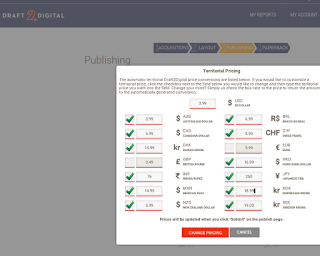 According to Bizer and Schindler, people buying stuff often view “odd prices” as being much lower than they actually are. Most buyers round the number down to the next unit, which means $1.99 looks like $1 in their brain. (This also explains why I'm likely to tell my husband that I spent $99 shopping, instead of fessing up to anything over $100. We'll talk about that at Timmies, too).
According to Bizer and Schindler, people buying stuff often view “odd prices” as being much lower than they actually are. Most buyers round the number down to the next unit, which means $1.99 looks like $1 in their brain. (This also explains why I'm likely to tell my husband that I spent $99 shopping, instead of fessing up to anything over $100. We'll talk about that at Timmies, too).So easy enough, but my question then becomes, does this "charm pricing" apply to other countries? According to Wikipedia, "In the former Czechoslovakia, people called this pricing "baťovská cena" ("Baťa's price")". Good enough for me.
So the trick for triggering "charm pricing" in brains from different territories is to round down to the lowest coin used in the country you want to make a sale in.
Now, in Canada, we've done away with the copper penny and, so our next lowest coin is the Bluenose dime. No, wait... the Beaver nickel. (I can see the nickel's the next to go as I've
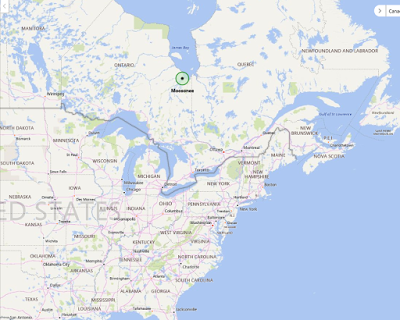 already forgotten it exists).
already forgotten it exists).So, I would have to set my price at my digit number ($3), plus .90 or .40 cents and one beaver to trigger "charm pricing" in Ontario (3.95 or 3.45).
Hey, my sales just went up in Moosonee!
No problem. I can handle a Canadian conversion on my novel's price, but what about when I start delving in Mexican Pesos or Danish Kronos. This is where I need to bring on some research assistance.
According to Numbeo, Mexicans are likely to pay 20.00 Pesos for a domestic beer. Indians, on the other hand, are likely to pay 100 Rupees for a domestic beer. Well I figure, my eBook is worth about the same as a beer. Why a beer? That's a silly question to ask a Canadian.
(It's my national duty to point out that a beer in Moosonee costs $5.99 CAN, about .99 more than for the Southern Ontarians, but the Moosonee folk don't know they're paying more because of the "charm pricing" effect.)
 So, I want to sell "Girl Desecrated" for a little less than the price of a Canadian beer. Now the way I figure it, I should do the same for the Australians and the folks in the UK, Asia and all around. Of course, I still have to make enough to buy myself a coffee at Tim Hortons, so I'm going to check a few conversions at The Money Converter.
So, I want to sell "Girl Desecrated" for a little less than the price of a Canadian beer. Now the way I figure it, I should do the same for the Australians and the folks in the UK, Asia and all around. Of course, I still have to make enough to buy myself a coffee at Tim Hortons, so I'm going to check a few conversions at The Money Converter.Let's say I charge readers in India 76 INR, I'll get $1.53 for my novel, and that will buy me one large double, double. I can live with that. But can the readers in India? Well, Amazon.in sells "The Vampire Academy" at 189.05, "Vampire Diaries" at 207.00 and "Miss Peregrine's Peculiar Children" for under 400. Looks like I'm going to get some Timbits with that coffee.
 The bottom line is this, I want global sales, and price conversions don't always work when you're converting book costs from the Western world to the East, and everywhere top and bottom. I changed most of my territorial pricing to half of what the algorithms thought it should be, and I will still be happy with my novel's price.
The bottom line is this, I want global sales, and price conversions don't always work when you're converting book costs from the Western world to the East, and everywhere top and bottom. I changed most of my territorial pricing to half of what the algorithms thought it should be, and I will still be happy with my novel's price.The only draw back is I can only control pricing on Draft2Digital. I used Pronoun for Amazon, Kobo, iBook, Google and Barnes and Noble. On those sites, the pricing is under the control of the automatic calculation.
I'll have to see what I can do about that. What you can do is try to maintain the power to control your pricing and then actively convert your book's price for different territories to ensure your novel is within affordable costs for readers from all countries.
Bizer, George Y.; Schindler, Robert M. (2005). "Direct evidence of ending-digit drop-off in price information processing". Psychology and Marketing. 22 (10): 771–783. doi:10.1002/mar.20084.
https://en.wikipedia.org/wiki/Psychol...
September 25, 2016
Dirty Little Secrets
Today, I started my first Goodreads give-away.
It's ingenious really. I offer X# of free books, and then my give-away is offered in writer's heaven (a site full of readers).
Hundreds, maybe thousands will sign-up to get a free copy and maybe if I'm lucky, venture off to my Web Site and read some of my free excerpts from the book, and then they decide they can't wait another minute, not even for a free copy.
So, being the true technically skilled, self-gratifying readers they are, they head over to Kobo or iBook and voila! They purchase and read the ebook version of Girl Desecrated .
*sigh*
It's good to be a writer in 2016 :)
September 21, 2016
Six steps to market your novel with mult
Six steps to market your novel with multiple examples of each. http://ow.ly/ScWO304rnXP #bookmarketing #indie #ian1 #writers #authors #promo http://ow.ly/i/nfX6B


Six Steps to Book Marketing - How to build awareness of your novel and increase sales
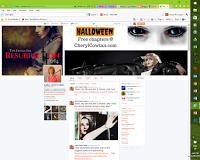 So you've written a novel, published on an internet-based retailer platform like Amazon, iBook, Kobo, and now you need to get the word out? Well Dorothy, the best thing you can do right now, is jump into the digital marketing funnel! It's going to carry you and your novel far. Here's how.
So you've written a novel, published on an internet-based retailer platform like Amazon, iBook, Kobo, and now you need to get the word out? Well Dorothy, the best thing you can do right now, is jump into the digital marketing funnel! It's going to carry you and your novel far. Here's how.Step 1: Exposure- Let people know about your book through SEO, Ads, Word of Mouth, Groups, Posts, Tweets, Launches, Facebook Posts, signings, podcasts, interviews, a street team re-tweeting, re-posting, etc.
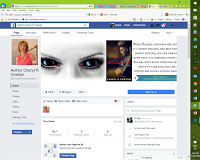 Step 2: Discovery- Once you get their eyes on your novel promotion, you need to get potential readers to come closer and get more information. This requires a link to click through, a sample to read, a video of you reading aloud, a landing page, a pre-order link, an author interview, and a newsletter sign-up.
Step 2: Discovery- Once you get their eyes on your novel promotion, you need to get potential readers to come closer and get more information. This requires a link to click through, a sample to read, a video of you reading aloud, a landing page, a pre-order link, an author interview, and a newsletter sign-up.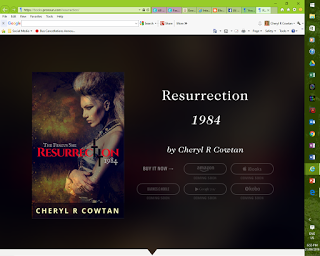 Step 3: Consideration- Get your potential reader to think about purchasing, offer a discount, a deal, a freebee, a promise, have ratings, testimonials, reviews, awards, favourable comparisons to other books, gifts.
Step 3: Consideration- Get your potential reader to think about purchasing, offer a discount, a deal, a freebee, a promise, have ratings, testimonials, reviews, awards, favourable comparisons to other books, gifts.Step 4: Conversion- The reader buys your book! Whoo hoo. Congratulations!
Step 5: Customer Relationship- Now you have to keep that relationship, get them to sign-up so you can contact them: write an alternative ending, share news on the books, upcoming series updates, show pictures, get fan competitions going, give rewards, gifts, themed give-aways, get to know them, ask for feedback on upcoming novels.
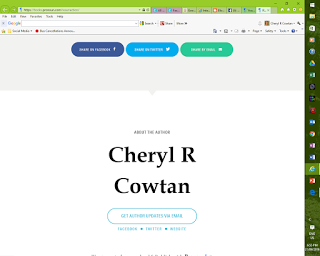
Step 6: Retention- Write a good book. It has to be good. If it is, they'll come back for another. Make sure the end of your novel has links to the next one, offer a free novel, short story or novelette. Never publish a bad book, make your name synonymous with your genre, with your niche, with the story you deliver, over and over, consistently.
That's the summary. Easy to say, overwhelming to do. Let's start with a simple step: Exposure. That will be the topic of my next blog posting "Six Steps to Book Marketing".
“Now, my life was the B movie, and I wa
“Now, my life was the B movie, and I was the dumb blonde trying to stay alive.” http://ow.ly/1B7J304jcx1 #vampires http://ow.ly/i/n82zV


September 20, 2016
He rubbed his thumb across the tip of my
He rubbed his thumb across the tip of my finger. “Do ye now, lass?” http://ow.ly/HKPT304jadr #teasertuesday #selfpub http://ow.ly/i/n81tV


September 19, 2016
I used to joke about nights like this, d
I used to joke about nights like this, dark, wet nights and ungodly happenings. http://ow.ly/Xq9m304jcfv #vampires http://ow.ly/i/n82q6





